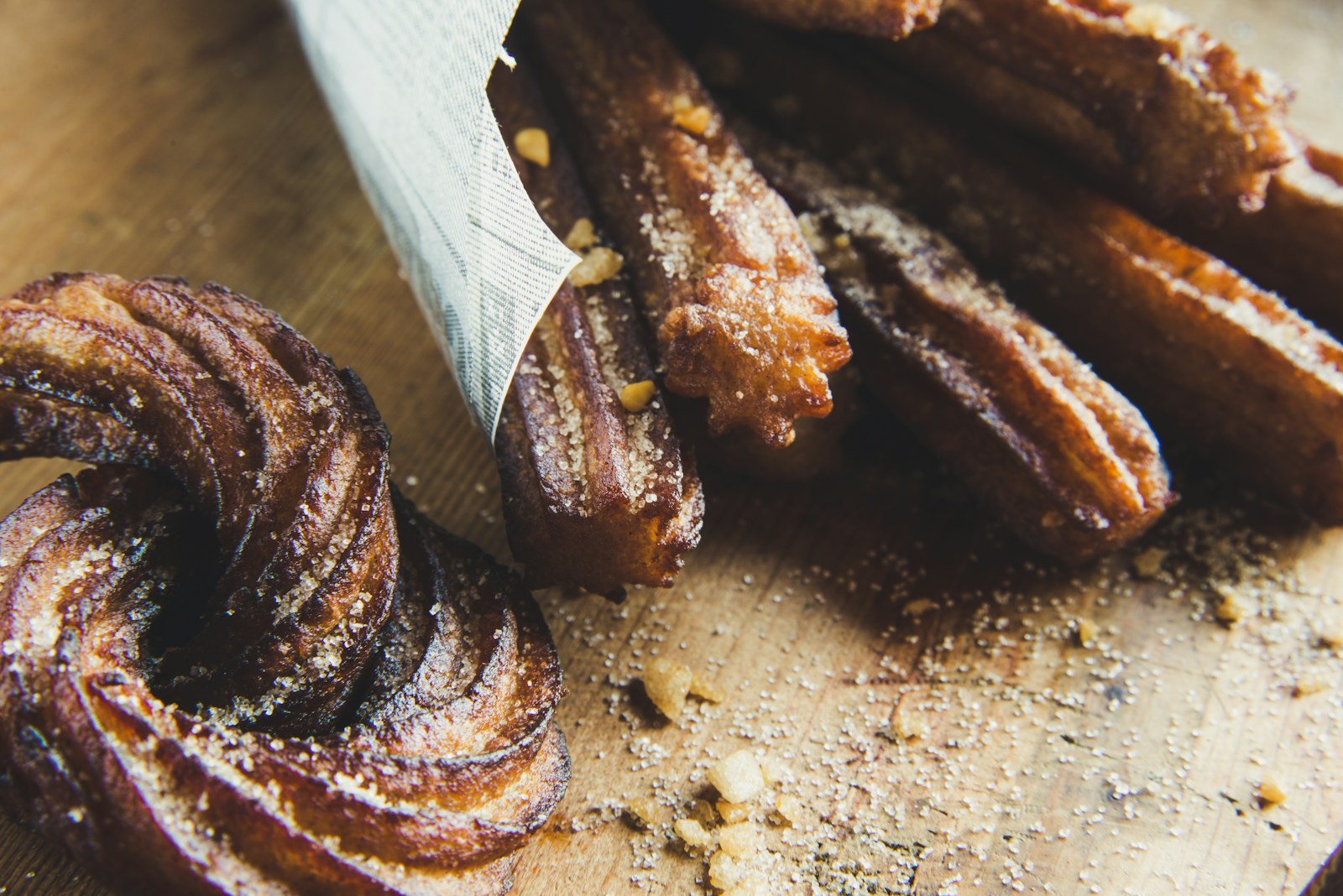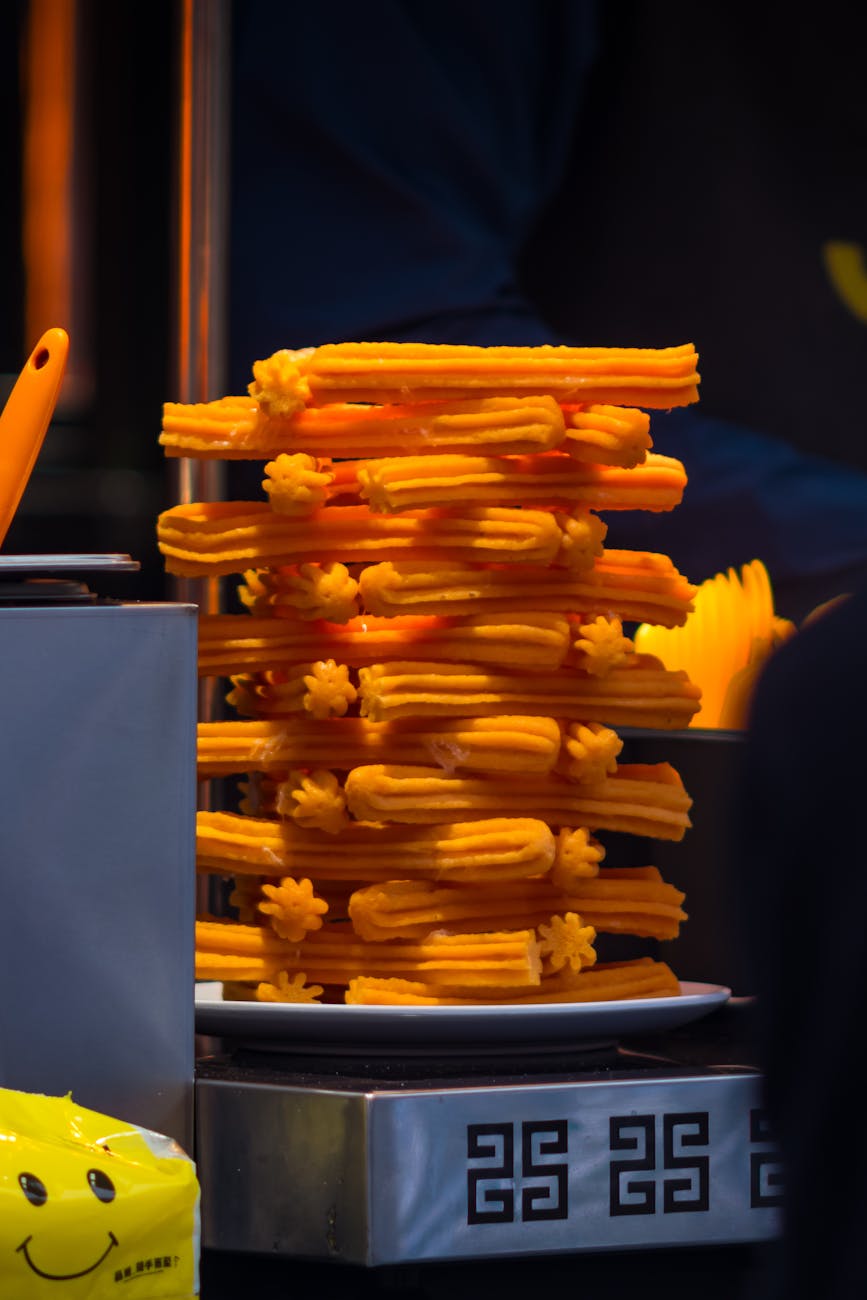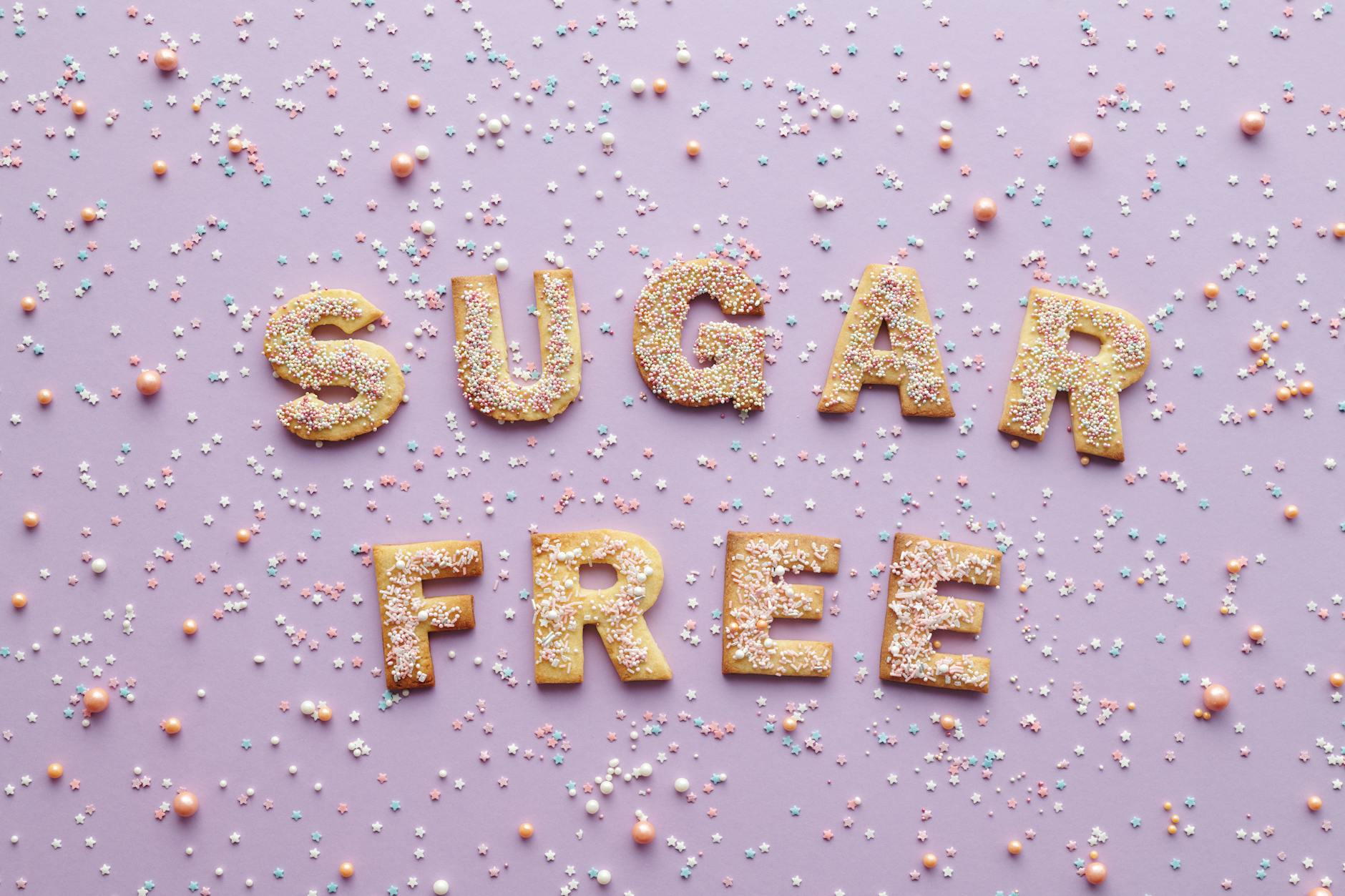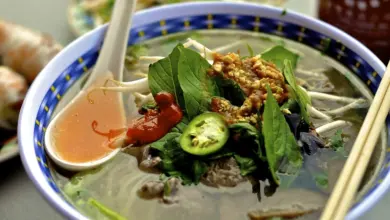
Crispy, sugary, and absolutely delicious—churros might seem innocent enough, but for people with diabetes, they’re far from a good choice. Packed with refined carbs, fried in oil, and rolled in sugar, they can cause dangerous blood sugar spikes and make glucose management even harder. While tempting, these treats could bring more trouble than they’re worth for those managing diabetes. This post uncovers why churros are risky and offers insights for better snack choices.
Relevant Resource:
Helpful YouTube video: 6 WORST Fried Foods If You Have Diabetes*
Understanding Diabetes and Blood Sugar Management
Managing diabetes starts with understanding the condition and how it impacts your body. When it comes to food choices like churros, it’s essential to know how diabetes works and why keeping your blood sugar in control is crucial.
What is Diabetes?
Diabetes is a chronic condition where your body struggles to regulate blood sugar levels effectively. There are three main types:
- Type 1 Diabetes: This is an autoimmune condition. Your immune system mistakenly attacks insulin-producing cells in the pancreas, leaving your body without enough insulin.
- Type 2 Diabetes: This is the most common form and develops when your body becomes resistant to insulin. Eventually, your pancreas can’t produce enough insulin to maintain healthy blood sugar levels.
- Gestational Diabetes: This occurs during pregnancy and usually goes away after delivery. However, it increases the mother’s risk of developing Type 2 diabetes later in life.
Each type affects the body differently, but they all share the challenge of managing glucose—the sugar your body uses for energy. Without proper management, glucose levels can spiral out of control, leading to long-term complications like heart disease, nerve damage, and kidney issues.
Learn more about managing diabetes

Photo by Artem Podrez
Importance of Blood Sugar Control
Why does blood sugar matter so much? Your blood sugar levels play a significant role in your overall health. When sugar levels stay too high or low for too long, it affects every major system in your body.
- High Blood Sugar (Hyperglycemia): This can lead to complications like vision problems, nerve damage, and increased risk of cardiovascular diseases. For people with diabetes, indulging in sugary treats like churros can cause dangerous spikes.
- Low Blood Sugar (Hypoglycemia): If levels drop too low, symptoms like dizziness, confusion, and even life-threatening conditions can occur.
Keeping blood sugar stable helps you avoid these risks while improving your energy levels, mood, and even your body’s ability to heal wounds. Think of your blood sugar like fuel for a car: too little, and the engine sputters; too much, and the system overloads.
For easy management, focus on:
- Monitoring: Regular checks with a glucometer.
- Diet: Choosing nutrient-dense foods over refined carbs and sugary snacks.
- Activity: Physical exercise helps balance glucose levels.
Understanding the fine balance needed for blood sugar control is key, especially when considering treats like churros. These seemingly harmless desserts pack a mix of sugar and refined carbs that can easily tip the scales.
Discover tips for managing blood sugar
Nutritional Composition of Churros
Churros are beloved for their crispy texture and sweet flavor, but their nutritional profile makes them a poor choice for people with diabetes. Understanding the components that make them risky can illuminate why they’re a challenging treat for glucose management.
High Sugar Content
Churros are typically coated in sugar, which is essentially pure sucrose. When consumed, sugar digests quickly, causing a rapid increase in blood glucose levels. This spike forces the pancreas to release insulin to stabilize blood sugar. However, for those with diabetes, insulin either isn’t produced effectively or the body is resistant to it. As a result, sugar remains in the bloodstream longer, leading to prolonged hyperglycemia.
High sugar intake not only impacts immediate glucose levels but also promotes insulin resistance over time, aggravating the condition further. In fact, studies show that added sugars directly contribute to the prevalence of insulin resistance and Type 2 diabetes. Learn more about how sugar drives insulin resistance.
Refined Carbohydrates and Low Fiber
The base of a churro is white flour, a refined carbohydrate that is stripped of its natural fiber. Refined carbs break down into glucose rapidly during digestion, acting much like sugar in the bloodstream. Without fiber to slow digestion, blood sugar levels spike quickly after consuming foods like churros.
Fiber normally plays a critical role in stabilizing blood sugar levels by delaying glucose absorption. The absence of fiber in refined carbs contributes to unpredictable glucose swings, making it difficult for diabetics to maintain control. Discover more about the effects of refined carbohydrates.
Caloric Density and Overeating Potential
Churros are highly caloric for their size. Between the refined dough, deep frying in oil, and heavy sugar coating, they pack a significant amount of calories into each bite. This kind of caloric density can easily lead to overeating, particularly because they lack the protein and fiber that would provide satiety.
Eating high-caloric foods like churros can leave you feeling full temporarily, but the absence of nutrients like fiber quickly causes hunger to return. This condition may lead to additional consumption of high-sugar foods, creating a cycle that exacerbates uncontrolled blood sugar. For people with diabetes, overeating calorically dense foods is especially dangerous because it increases the risk of complications. Learn why caloric density leads to overeating.

Photo by Nataliya Vaitkevich
Understanding these nutritional pitfalls helps illustrate why churros are particularly bad for people with diabetes. Their high sugar content, refined carbohydrates, and caloric density make managing blood glucose levels significantly harder.
Churros and Blood Sugar Spikes
Churros, with their perfect blend of crispy fried dough and sugary coating, are undeniably delicious. However, for those managing diabetes, these delightful treats could wreak havoc on blood sugar levels. The combination of refined carbohydrates, deep frying, and sugar makes churros a nutritional nightmare for blood glucose control. Let’s explore why churros are particularly harmful to blood sugar regulation.
Rapid Insulin Response: How Churros Cause Immediate Blood Sugar Spikes
Imagine eating a churro—its sugary coating immediately hits your taste buds while the refined carbs digest quickly, turning into glucose. This quick breakdown leads to a rapid influx of sugar into your bloodstream, which forces your pancreas to release insulin at a high rate. For someone with diabetes, this process creates several challenges:
- Type 2 Diabetes: Your body may not respond to insulin effectively, leaving glucose levels elevated.
- Type 1 Diabetes: Limited insulin production makes it harder to counteract these spikes.
Churros’ high glycemic index causes blood sugar to spike within minutes, overwhelming the body’s glucose regulation system. According to research on blood sugar regulation, sugary foods like churros are among the worst offenders for sudden glucose increases.
For those with diabetes, this quick surge can feel like setting off a chain reaction of health concerns. Imagine trying to balance on a seesaw that keeps slamming from one end to the other—it’s exhausting for your body and dangerous for your health.

Photo by Xiao Bo
Consequences of Blood Sugar Fluctuations: Short-Term and Long-Term Impacts
Blood sugar fluctuations are more than just numbers on a glucometer—they have real-life consequences that can affect your body immediately and over time.
Short-Term Effects:
- Fatigue and Weakness: After the initial sugar high from churros, blood glucose can crash rapidly, leaving you feeling tired and sluggish.
- Irritability: Rapid swings in glucose levels impact mood stability, increasing feelings of anxiety or irritability.
- Increased Hunger: Blood sugar drops may trigger cravings, encouraging further unhealthy eating.
- Risk of Hypoglycemia: If insulin overcompensates, it could lead to dangerously low blood sugar levels.
Long-Term Health Risks:
- Cardiovascular Problems: Regular glucose fluctuations increase the risk of heart disease, as highlighted by a study on glucose variation.
- Nerve Damage: Nerves are highly sensitive to blood sugar shifts, which can lead to neuropathy over time.
- Cognitive Decline: According to recent insights on glucose’s impact on the brain, large blood sugar swings can impair memory and mental clarity.
- Worsened Insulin Resistance: Repeated spikes and crashes make the body less responsive to insulin, further aggravating diabetes management.
Skipping churros and opting for low-glycemic alternatives is an essential step in keeping these complications at bay. Remember, every bite impacts not just your immediate sugar levels but your long-term health as well.
Health Risks Associated with Churro Consumption
Churros may be a tasty indulgence, but for people with diabetes, the risks far outweigh the momentary joy. Their high sugar, unhealthy fats, and refined carbohydrates can significantly impact your blood sugar and overall health. Let’s dissect the specific risks and how they can complicate diabetes management.
Increased Risk of Complications
Churro consumption, especially in excess, can raise your risk of several diabetes-related complications. The excessive sugar and fat content in churros contribute to inflammation and oxidative stress, both of which exacerbate chronic conditions.
- Nerve Damage (Neuropathy): High blood sugar levels over time damage your nerves. This leads to symptoms like pain, tingling, and numbness, which can worsen if blood sugar remains unstable. Regular consumption of sugary and fried foods, like churros, only speeds up this damage.
- Kidney Issues (Nephropathy): Diabetes places extra strain on your kidneys as they work overtime to filter excess glucose. The high glycemic index of churros leads to increased blood sugar, further burdening kidney function. Learn more about diabetes complications here.
- Heart Disease: Refined carbs and trans fats commonly found in fried foods contribute to plaque buildup in arteries. This raises the risk of cardiovascular problems like heart attack and stroke (American Heart Association).
Potential for Weight Gain
Churros are calorie-dense, combining carbohydrates, sugar, and fried oil into a hyper-palatable treat that’s hard to resist. However, this caloric density comes at a cost:
- High Calories, Low Nutritional Value: A single churro can contain hundreds of empty calories. These calories provide energy but little to no essential vitamins, minerals, or fiber.
- Weight Challenges with Diabetes: Excess weight, particularly visceral fat, worsens insulin resistance, making it even harder to manage diabetes effectively. Snacking on churros regularly could lead to weight gain, compounding blood sugar management issues.
For those with diabetes, maintaining a healthy weight is critical. Adding churros to your diet increases the likelihood of exceeding your daily caloric needs, setting off a cycle of unhealthy weight gain. Learn more about how calories and weight interact.
Impact on Diabetes Management
Churros disrupt effective diabetes management in several ways. Beyond causing immediate blood sugar spikes, their nutritional profile can interfere with long-term glucose control.
- Blood Sugar Spikes and Crashes: The lack of fiber in churros allows for rapid digestion, leading to glucose surges. These are often followed by sudden crashes, making blood sugar levels harder to stabilize.
- Hindered Meal Planning: Diabetes management requires careful planning of meals to balance carbohydrates, protein, and fats. Treats like churros throw off this balance, leading to unpredictable glucose levels.
Additionally, churros may affect medications or insulin regimens. If you’re using insulin, sudden sugar spikes caused by churros could require precise insulin adjustments. This raises the risk of errors or complications if mismanaged. For a detailed guide on diabetes complications, explore insights from MedlinePlus.

Photo by Nataliya Vaitkevich
Recognizing these risks is essential for making informed choices. The sugary allure of churros might provide fleeting satisfaction, but the long-term consequences for diabetes management and overall health are significant.
Alternatives to Churros for Diabetics
For individuals managing diabetes, finding satisfying alternatives to high-sugar, high-carb treats like churros can feel like a challenge, but it doesn’t have to be. With a variety of delicious options, you can enjoy snacks and desserts that are kinder to your blood sugar while still indulging your sweet tooth. Below are some practical ideas organized into low glycemic foods and healthier dessert options.
Low Glycemic Foods: List Suitable Low Glycemic Index Snacks
Snacking smarter starts with choosing foods that have a minimal impact on blood glucose levels. Low glycemic index (GI) options digest more slowly, helping to keep glucose levels stable. Here are some excellent snack ideas:
- Vegetables and Hummus: Carrot sticks, cucumber slices, or bell pepper strips with a serving of hummus provide fiber, healthy fats, and protein.
- Hard-Boiled Eggs: A simple, protein-packed snack that’s perfect for keeping hunger at bay without spiking blood sugar.
- Greek Yogurt with Berries: Opt for plain, unsweetened Greek yogurt and top it with a handful of blueberries or raspberries for antioxidants and a touch of natural sweetness.
- Popcorn: Air-popped popcorn is a low-GI whole grain that’s surprisingly satisfying. Add a sprinkle of nutritional yeast or cinnamon for flavor.
- Apple Slices with Nut Butter: Slice up an apple and pair it with almond or peanut butter for a balanced combination of carbs, fiber, and healthy fats.
- Trail Mix: Combine roasted nuts, seeds, and a few pieces of unsweetened dried fruit for a nutrient-dense snack that travels well.
- Cheese and Whole-Grain Crackers: This duo brings together protein, fat, and complex carbs to keep blood sugar steady.
Explore more low glycemic snack ideas

Photo by Henri Mathieu-Saint-Laurent
Each of these snacks provides nutrition and satisfies cravings without causing sharp increases in glucose levels, making them excellent choices for people with diabetes.
Healthier Dessert Options: Suggest Alternative Dessert Options That Are Diabetes-Friendly
For those moments when you’re craving a dessert but want to keep your blood sugar in check, consider these diabetes-friendly options. They’re every bit as indulgent as churros without the drawbacks.
- Sugar-Free Chocolate Mousse: Made with unsweetened cocoa powder, sugar substitutes, and heavy cream or avocado for creaminess.
- Chia Pudding: Combine chia seeds with unsweetened almond milk and let it set overnight. Add a sprinkle of cinnamon or a dollop of sugar-free jam for flavor.
- Baked Apples with Cinnamon: Core an apple, dust it with cinnamon, and bake until tender. This dessert feels decadent but won’t derail your glucose control.
- Strawberry-Chocolate Greek Yogurt Bark: Spread Greek yogurt on a baking sheet, top with sliced strawberries and a drizzle of melted dark chocolate, then freeze.
- Oatmeal Raisin Cookies (Low-Sugar): These cookies, made with whole-grain oats and a sugar substitute, hit that nostalgic sweet spot.
- Dark Chocolate Squares: Choose dark chocolate with at least 70% cocoa and savor it in small portions.
Check out more diabetes-friendly desserts here
Remember, enjoying desserts doesn’t mean sacrificing health. By using natural sweeteners, whole grains, and low-GI ingredients in your recipes, you can create treats that are every bit as satisfying as their sugar-laden versions. These options allow you to indulge without the guilt or the blood sugar spikes, making them perfect for people with diabetes looking for solutions.
Expert Opinions and Research
Understanding why churros are bad for people with diabetes requires a closer look at scientific research and expert recommendations. The interplay of sugar, refined carbohydrates, and diabetes has been studied extensively, and dietitians provide valuable insights into better food choices for glucose control.
Research Findings: Summarize key studies related to sugar and refined carbohydrates
Research has consistently linked sugary foods and refined carbohydrates to issues with blood sugar regulation, especially in people with diabetes. Churros, a prime example of such foods, contain both in abundance. Let’s explore what the studies reveal:
- Increased Risk of Type 2 Diabetes: Studies suggest refined carbohydrates, such as white flour, lead to rapid glucose spikes. This contributes to insulin resistance over time. Research from the Nutrition Source at Harvard highlights a direct association between high-glycemic foods and heightened Type 2 diabetes risks.
- Blood Sugar Fluctuations: Refined carbs digest quickly, leading to swift surges in blood glucose. A study published on PubMed found a correlation between diets high in refined carbohydrates and poor glycemic control in diabetes patients.
- Long-Term Health Implications: Foods like churros are loaded with added sugars and unhealthy fats, which exacerbate inflammation and oxidative stress. Evidence from Nature shows these mechanisms can progress to chronic complications like cardiovascular disease.
Though churros are a quick indulgence, their nutritional composition makes managing diabetes much harder. These findings emphasize the importance of limiting high-sugar, low-fiber foods in a diabetic diet.

Photo by Tima Miroshnichenko
Dietitian Recommendations: Include insights from nutritionists or diabetic educators
Dietitians and diabetes educators stress the need to focus on balanced, low-glycemic meals to manage blood sugar effectively. Here are key recommendations for those concerned about churros and similar foods:
- Avoid High-GI Foods: High-glycemic index options like churros should be minimized. Instead, choose whole grains, legumes, and non-starchy vegetables, which stabilize blood sugar. This is supported by the American Diabetes Association’s dietary advice.
- Prioritize Protein and Fiber: Dietitians emphasize that meals rich in protein and fiber slow down glucose absorption. This makes it easier to maintain steady sugar levels. For instance, replacing churros with a snack combining nuts or seeds with whole fruits could be more diabetic-friendly.
- Adopt Portion Control: If indulging in treats, do so in small amounts and pair them with protein or healthy fats. This slows glucose absorption and minimizes spikes. The Mayo Clinic underlines portion control as a critical aspect of a diabetes-friendly diet.
- Plan Meals in Advance: Having a structured meal plan can help prevent impulse snacking on sugary foods. Incorporating non-starchy vegetables and whole grains ensures better blood sugar control, as noted in CDC Diabetes Meal Planning Tips.
Learning from experts helps reinforce why foods like churros pose risks for diabetes. Although delicious, there are better options available to satisfy cravings while protecting your health.
Conclusion
Churros are delicious but present real challenges for blood sugar control in people with diabetes. Their combination of sugar, refined carbs, and deep frying creates a perfect storm for rapid glucose spikes and long-term complications. While life with diabetes doesn’t mean giving up on indulgence, making mindful food choices is crucial. Opt for healthier alternatives that satisfy cravings without jeopardizing your health. Remember, small changes in diet can lead to significant benefits in diabetes management.




